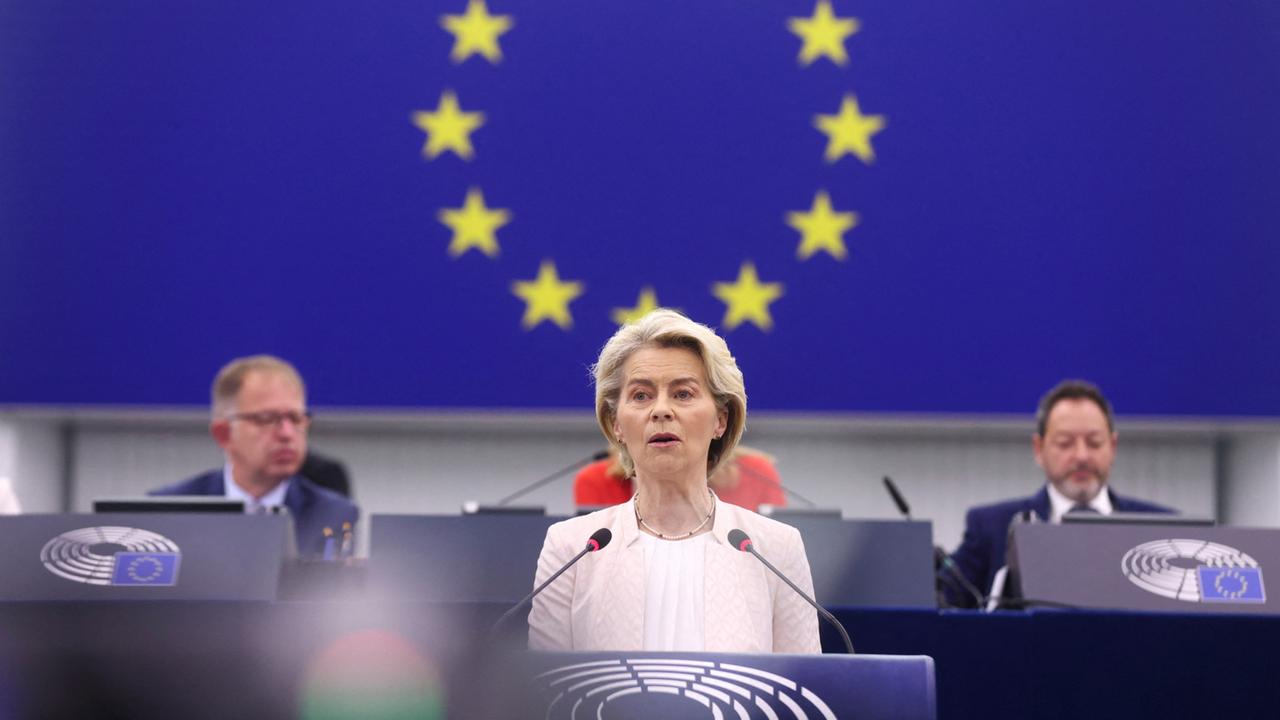The EU agreed on this in the spring, and now the money is flowing: 1.5 billion euros from interest income from frozen Russian state assets are to benefit Ukraine for defense and reconstruction.
For the first time, the European Union is releasing interest income from frozen Russian assets to Ukraine. EU Commission President Ursula von der Leyen announced a transfer of 1.5 billion euros.
“There is no better symbol or use for the Kremlin's money than making Ukraine and all of Europe a safer place to live,” she wrote on the X platform.
Joy from Ukraine, criticism from Russia
Ukrainian Prime Minister Denys Shmyhal welcomes the first transfer by the EU. This is a significant contribution to the defense and reconstruction of Ukraine, he wrote on X.
According to the Kremlin, Russia wants to react to the transfer of the proceeds from its assets frozen in the EU to Ukraine. There will be no immediate response. Russia will consider its next steps, said Kremlin spokesman Dmitry Peskov. “But of course such steps by the European Commission will not go unanswered.” When the decision was made in May, the Kremlin already described the plans as “expropriation.”
Mostly for equipment and training
The money in question is interest income from frozen assets of the Russian central bank in the EU. The assets were frozen as a punitive measure against Russia for its war of aggression against Ukraine. According to the Commission, around 210 billion euros of the Russian central bank are frozen in the EU. The Brussels-based financial institution Euroclear recently announced that it had earned around 4.4 billion euros in interest from this in 2023. The EU had already decided in principle in the spring to use the proceeds for Ukraine.
The plan is for 90 percent of the usable interest income from the safekeeping of Russian central bank funds to be channeled into the EU fund for financing military equipment and training. The remaining ten percent will be used for direct financial aid to Ukraine.
The money now flows through the European Peace Facility and the Ukraine Facility, two so-called EU financing mechanisms. This allows EU member states to be reimbursed for military support for Ukraine, which has been attacked by Russia, and to pay for joint orders.
No Expropriation decision planned
There are currently no plans to use the Russian central bank funds directly through an expropriation decision. One reason for this is legal concerns and likely retaliatory measures. Moscow had already warned the EU last year against confiscating the property of the Russian state or Russian citizens.
It is conceivable, for example, that companies from EU countries operating in Russia could then also be forcibly expropriated. In addition, direct use of Russian assets could also lead to other states and investors losing confidence in the European financial centre and withdrawing assets from the EU.




